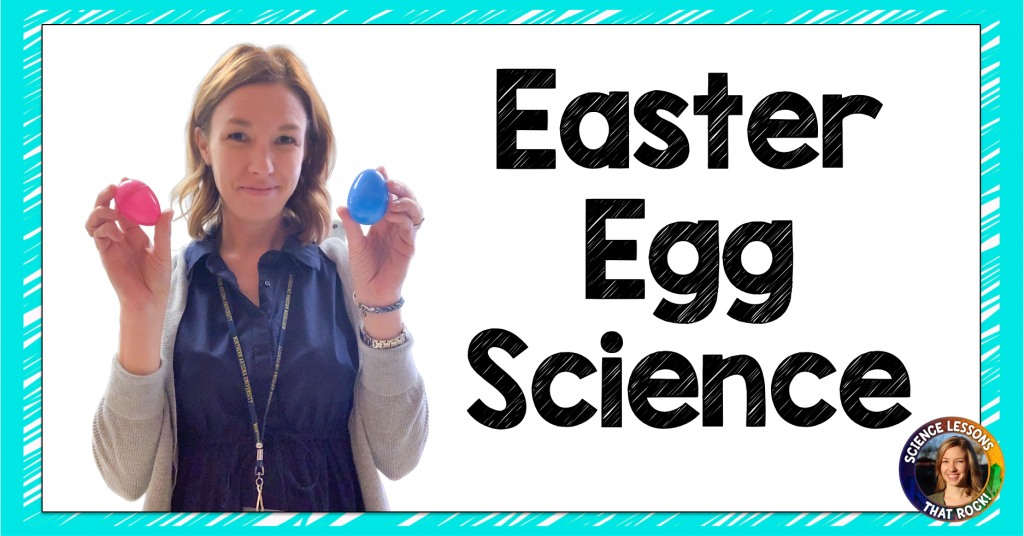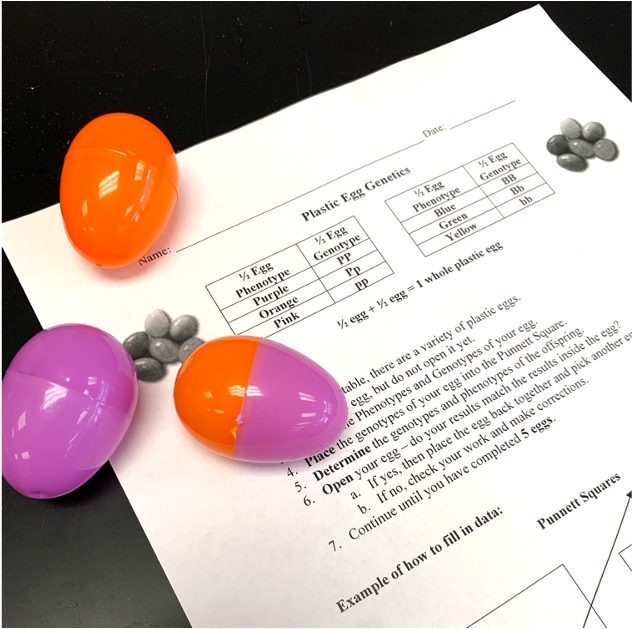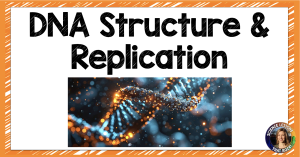
Right around Easter, plastic eggs are in every store you walk into. They are inexpensive and fun for students… wondering how to use them in your science classroom? I have a bunch in my classroom that I use each year for a genetics activity (more on that in a minute!) but there are a ton of ways to get use out of them year after year. Here are some science related ideas!
- OBSERVATION INFERENCE ACTIVITY: Grab some random items from your classroom (you know you have them!) and put them inside the eggs. Have students use the power of observation to guess what is inside the egg without opening it. Tip: To make sets for lab groups, put the same object inside all the pink eggs, a different object inside all the blue eggs, etc. That will help with organization.
- DENSITY: All the eggs have the same volume, but you can fill them with objects of different mass and have students calculate the density of the eggs. (To find the volume of the egg, have students use water displacement).
- BUILD AN ATOM: Assign a student an atom. Have them use colored pom poms to represent protons and neutrons, and have them fill the egg (nucleus) with the correct number of pom poms. You could also do the opposite- have the eggs pre-filled and have them determine which atom it represents.
- GENETICS: If you are teaching Punnett squares and incomplete dominance, check out this activity where students fill out Punnett squares based on the outer color of the egg.
- ESCAPE ROOM CLUES: If you are into escape rooms, hide clues inside eggs that students have to solve.
- TEST REVIEW: If you are about to give a test, create a review game by hiding review questions inside eggs. Students will find the eggs around the classroom, answer them correctly, and earn a prize. (Need prize ideas? Check out this blog post).
- BUILD AN INSULATOR: If you are teaching conductors and insulators, give students a small piece of wrapped chocolate and tell them they need to keep it from melting by choosing the best insulator. Have them fill surround the chocolate with an insulator of their choice and place the egg under a heat lamp for 5 minutes. Insulator ideas could include: cotton balls, straw, school paper towels, or water beads.
- MAKE A BATH BOMB: If you are teaching chemical reactions, have students build a homemade bath bomb and use the egg as a mold.
- WEATHERING: If you are teaching types of weathering, you can use Easter eggs for mechanical weathering. Place a sugar cube inside an Easter egg, close it, and get shaking! Have them record the initial mass, and the mass after every 20 shakes. How long does it take for the sugar cube to break down?
- LAYERS OF THE EARTH MODEL: If the plastic egg represents the crust, have students use clay to build the inner layers of the earth. They can use different colors to represent the inner core, outer core, and mantle. (Be sure to point out to students the earth is a sphere, not an oval to avoid any misconceptions).
Bonus: Ok, this one needs real eggs, not plastic. You can grow geode crystals inside eggshells with a few simple ingredients! (This tutorial has you use alum, but you could also use borax).
Be sure to snag eggs when they are sale AFTER Easter to save a few dollars, and hang on to them all year.
Rock on,










